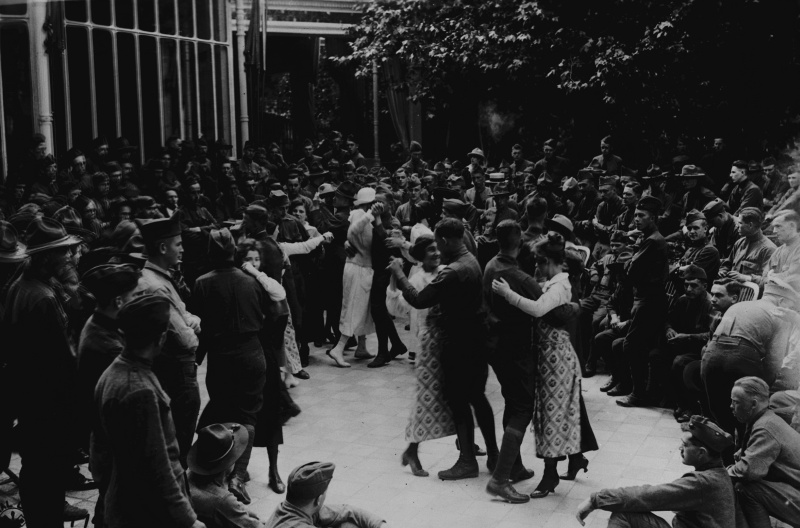
Chicago music, entertainment, and food and hospitality facilities reopened after influenza pandemic
On Oct. 28, 1918, after Chicago influenza case tallies had declined, many bans were removed to that music, entertainment, and food and hospitality facilities could reopen.
Theaters had to pass inspection before they could re-open their doors, coughers and sneezers were prohibited from entering, no crowding would be allowed, and all public places were required to close by 10 pm.
Beginning October 29, all music and entertainment could resume in the city’s restaurants, cafes, and hotels. On Wednesday the 30th, theaters and movie houses between Howard and Diversey Parkway could re-open. The following day, theaters and movie houses between Diversey Parkway and 12th Street could resume their hours. On Friday, November 1, the rest of the city could re-open.
Between the start of Chicago’s epidemic on September 21 and the removal of restrictions on November 16, the Windy City experienced a staggering 38,000 cases of influenza and over 13,000 cases of pneumonia. The white population of the city experienced an increase in deaths of 2,610 percent over the previous year. The African American population, on the other hand, experienced an increase of only 1,400 percent.
The discrepancy was likely due to racial disparities in Chicago’s health care and access: African American Chicagoans were already much more likely to die of disease than their white counterparts. Epidemic influenza, a disease that did not respect color or socioeconomic lines, therefore only appeared to attack whites with more virulence.
Tags:
Source: Influenza Encyclopedia
Credit: Photo: Courtesy University of Michigan Center for the History of Medicine.
